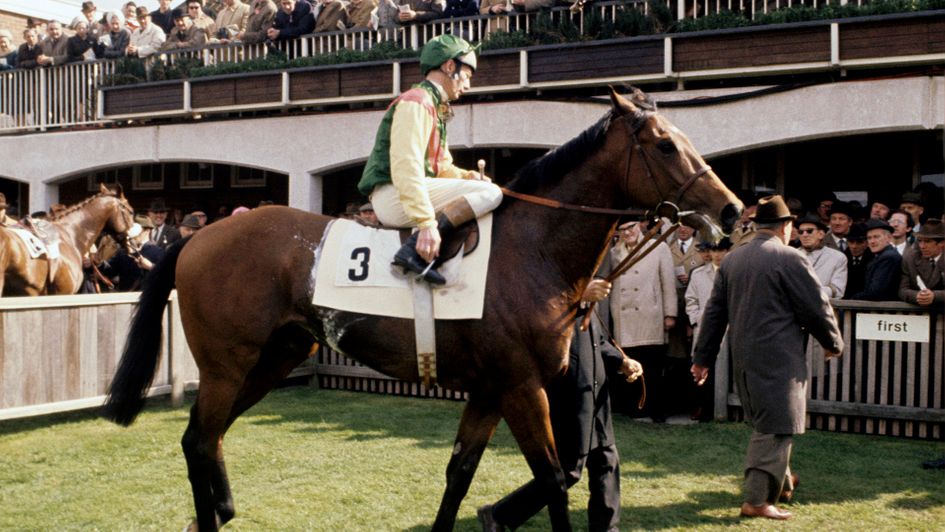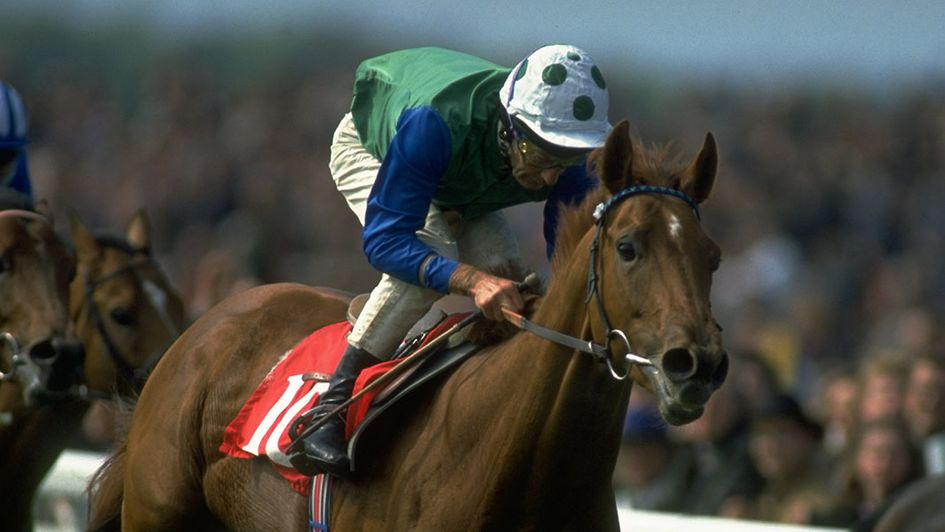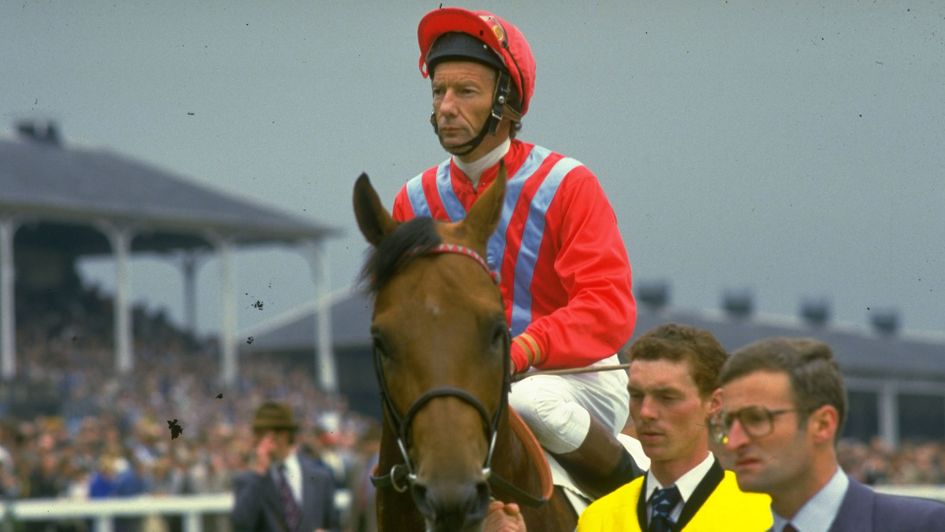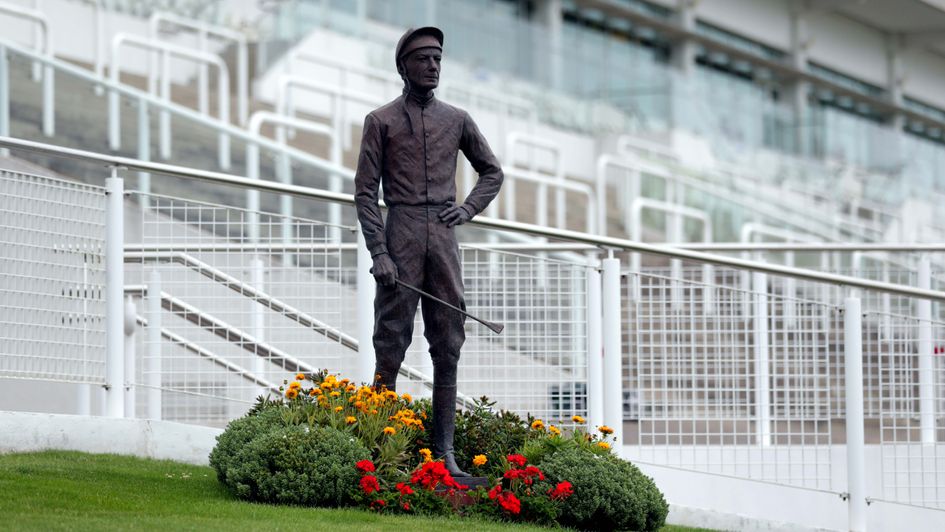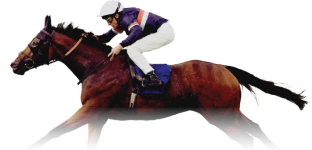Just over a year since the passing of legendary jockey Lester Piggott, we look back on an extract from Nijinsky’s Timeform essay from 1970.
“Never use a superlative,” the late Joe Estes, long-time editor of The Blood-Horse, once said to one of his junior reporters. "Nothing you run into on this kind of beat ever justifies a superlative." Estes had a scholar's dislike of superlatives, for undoubtedly in many instances a sounder, more rational appreciation of events is to be arrived at by avoiding them, and certainly discretion resides in limiting their use, but the very essence of horse-racing is to discover the best horse and when an animal such as Nijinsky appears on the scene superlatives can hardly be cold-shouldered altogether.
Nijinsky made the racing year: such were his feats that he dominated it from start to finish, and for the best part of the season he towered over the opposition. Had he been retired after the St Leger he would have gone to stud unbeaten, the winner of eleven races, including the Two Thousand Guineas, the Derby and the St Leger; the first winner of the triple crown since Bahram, who was retired unbeaten after nine races. Although, in our opinion, Nijinsky never earned that title of the horse of the century, still less that of the greatest horse ever, when judged primarily not on the importance and the quantity of the races he won but on the quality of his performances in them, he was, without much doubt, one of the best Derby winners since the war.
Nijinsky had exhausted almost all the superlatives before he set foot on the racecourse as a three-year-old. His performances as a two-year-old stamped him a horse of the highest class, earned him top weight in the Free Handicap and made him an exciting prospect for the classics. For a two-year-old with pretension to stay he had a record unusual by present-day standards in that it had come through a succession of important races unblemished. After winning four races in Ireland, including the Railway Stakes, the Anglesey Stakes and the Beresford Stakes, during which time he only once knew what it was to be extended, Nijinsky ran in the Dewhurst Stakes at Newmarket and won without coming off the bit. Everything about Nijinsky was impressive his looks, his pedigree, his action and his form – and at the time it was difficult to visualise any horse barring his way in the Two Thousand Guineas unless it be Huntercombe, winner of the Middle Park Stakes, or Breton, winner of the Grand Criterium.
By the time the Two Thousand Guineas came to be run Nijinsky looked out on his own and he started at odds of 7/4 on. Breton had been scratched from the race and Huntercombe was under a cloud, having been beaten already in the Guineas Trials at Kempton and Ascot. The few races of importance already decided during the season had turned up no new danger except, perhaps, Tamil, winner by two lengths from Gold Rod in the Craven Stakes. Yellow God, second to Huntercombe in the Middle Park and rated 6 lb inferior to Nijinsky in the Free Handicap, had shown his well-being by beating Gold Rod by three lengths in the Two Thousand Guineas Trial at Kempton, but his ability to stay a mile had to be taken on trust and he was a full brother to three sprinters, including St Alphage. Shiny Tenth had won the Free Handicap, normally a race that represents good form, but carrying only 8-3 and winning by only half a length. In France, in the Prix Djebel, the highly-rated Without Fear, a son of the One Thousand Guineas and Oaks winner Never Too Late, had been beaten in a scrambling finish by the Sky master horse Roi Soleil, defeated in four of his five races as a two-year old. Probably Without Fear would improve on better ground and evidently Roi Soleil was a good horse, but for what did the Prix Djebel or any of the other trials count after Nijinsky had made his reappearance in the Gladness Stakes at the Curragh on the first Saturday in April? Nijinsky couldn't have been more impressive; he confirmed in full everything that had been said of him the previous season. After coasting all the way he had his field stone cold approaching the last furlong, and in the final one hundred and fifty yards he put at least four lengths between himself and his nearest pursuers, Deep Run and the Coventry Stakes winner Prince Tenderfoot. Nijinsky looked as fit as one could have expected with the Guineas still three weeks away, and more than that, he had the conformation expected of a classic winner. He was a magnificent individual.
In the paddock before the Two Thousand Guineas Nijinsky outclassed his rivals in appearance as seldom a classic field can have been outclassed before. He moved down to the start majestically, and his performance in the race itself was worthy of a classic. He was always going strongly on the bridle in a well-run race paced for a long way by those very fast horses Amber Rama, Huntercombe and Yellow God, and was not asked to make a move until reaching the hill, by which time Huntercombe had taken water, Amber Rama was beginning to crack, and Yellow God had gone on. Now Nijinsky had to get down to work, but his stride did not shorten. He kept on moving strongly and swept through powerfully to win most impressively by two and a half lengths from Yellow God, who held second place with ease from the staying-on Roi Soleil. Reasonable excuse could be made for the poor showing of Shiny Tenth, pricked with a nail and lame after the race, and Without Fear, beaten before he started after a rough journey from France, but Nijinsky had left no room for reasonable doubt who was master. Although there have been stronger fields for the Guineas (the best of those behind Yellow God turned out to be Amber Rama and Huntercombe, both sprinters, and Saintly Song, who ran below par), there cannot have been all that many Guineas winners who could have improved on the manner in which Nijinsky dealt with top-class horse like Yellow God.
There was nothing in the Guineas field that could have the slightest chance of turning the tables on Nijinsky in the Derby, Nijinsky's next objective, provided he stayed the trip, and in fact none of those defeated at Newmarket bothered to take him on again. Whether Nijinsky would stay a mile and a half was problematical. His sire, Northern Dancer had failed to last out the distance in the Belmont Stakes, while his dam's best performances had been at a mile and a quarter, when winning the Canadian Oaks and the Queen's Plate. However Nijinsky seemed to possess the perfect racing temperament. He had settled well in the Guineas, and he had certainly not been stopping at the end of the race. What effect testing conditions might have on Nijinsky's action or staying power could only be guessed at, but on the day the problem did not arise, for the ground at Epsom rode fast.
In the short time between the Two Thousand Guineas and the Derby a more pressing question became the search for a horse good enough to test Nijinsky at Epsom. The winter favourite Approval fell badly from grace in his first race of the new season, the Royal Stakes at Sandown, and while he went a long way towards reinstating himself in the public eye by winning the Dante Stakes at York from Nijinsky's stable-companion Riboprince, his style of winning was not that of a world-beater. In his favour, the longer distance of the Derby seemed certain to suit him extremely well. Of the other English contenders Politico, who had beaten the Lingfield Derby Trial winner Meadowville in the Chester Vase, looked as good as any, but a few days before the Derby he bruised his near-hind and was pulled out, to be replaced by Cry Baby, winner of the Royal Stakes but well beaten behind Approval in the Dante Stakes. Two worthy challengers were found in France; Stintino, the best three-year-old in the country on form, and Gyr, on form a good horse and by reputation an exceptionally good one. Gyr, an unlucky third in the Grand Criterium and winner of both his races in 1970 was said to be the reason for his trainer's delayed retirement, and was even spoken of in the same breath as the same trainer's Sea-Bird II, the sire of Gyr. Stintino, out of the brilliant racemare Cynara, was unbeaten in four races and ran a splendid trial in the Prix Lupin three weeks before the Derby, beating some of the best horses in France in brilliant style. Unlike Nijinsky, Gyr was already proven over a mile and a half, and while Stintino had not run beyond an extended mile and a quarter he had won over a mile and a quarter in the mud as a two-year-old. The evident predominance of Nijinsky, Approval, Gyr and Stintino, and the prevailing firm going, ensured one of the smallest fields for the Derby for many years, and probably chiefly because of the small field there were, for once, no hard-luck stories or untidy incidents in the race.
For the first (and only) time in his career Nijinsky started at odds against, though at odds of only 11/8, and the market reflected a very healthy respect for Gyr, a second favourite. As at Newmarket Nijinsky stood out in the paddock, a giant in appearance, but he had a harder race than in the Two Thousand Guineas. Gyr at a mile and a half proved an even tougher proposition than did Yellow God at a mile. In the race, little of significance took place until the top of the hill, where Approval, who had made an unusually quick start for him and had chased the pacemakers Cry Baby and Long Till, came under pressure and gave every indication that he was not going to justify the high hopes held out for him. At this stage Nijinsky was still on the bridle in the middle of the field and he remained on the bridle while taking closer order behind Long Till, Meadowville and Mon Plaisir coming down towards Tattenham Corner, with Gyr at his off-side. For a horse so difficult to handle that he ran into trouble in nearly every race we saw him in Gyr came round Tattenham Corner surprisingly nimbly. He showed not a trace of awkwardness and made his effort much sooner than Nijinsky, striding out in such tremendous style that he went clear about two furlongs from home and seemed the likely winner. It must be said that for few strides defeat for Nijinsky, racing between Gyr and the improving Stintino and now being shaken up, appeared on the cards. But then Nijinsky shrugged off Stintino, passed Gyr when shown the whip (if not actually cracked with it), and came clear to win in handsome style by two and a half lengths. Stintino, Great Wall and Meadowville were the only others to finish within eighteen lengths of the winner. The time for the race nearly equalled Mahmoud's record and showed how firm the ground had become. Nijinsky's victory gave Vincent O'Brien his third Derby winner, following Larkspur and Sir Ivor; the man has also trained three successive Grand National winners, three successive Cheltenham Gold Cup winners and three successive Champion Hurdle winners, too! For Lester Piggott it was his fifth success in the Derby.
When Sassafras, who had been more than two lengths behind Stintino in the Prix Lupin, won the Prix du Jockey-Club in a close finish four days after Epsom, there seemed no reason to doubt that Nijinsky was the best horse of his age in Europe. When Gyr came out in the Grand Prix de Saint-Cloud in the first week in July and proceeded to outrun the Prix Ganay winner Grandier there seemed every possibility that Nijinsky was also better than any of the older horses. Nijinsky himself did not meet any older horse until later in July, when taking part in the King George VI and Queen Elizabeth Stakes. In the meantime he ran in the Irish Sweeps Derby at the Curragh, a race that could tell us nothing new about his merit. Ridden by Liam Ward instead of Piggott, Nijinsky won as easily as expected from Meadowville, beaten over eight lengths at Epsom, and Master Guy, stable-companion of Gyr and about the same horse as Leander and Gold Rod on the result of his most recent outing in the Prix Jean Prat. What was noticeably different about Nijinsky on this occasion was that he lost his calmness during the long preliminaries; he sweated up and never settled at all.
The next day Nijinsky showed no signs of his exertions, and he became a certain runner for the King George VI and Queen Elizabeth Stakes at Ascot. Although the King George VI comes rather close on the heels of the Grand Prix de Saint-Cloud, and still labours under the handicap of having a lot less prize-money to offer than its great rival despite the valiant efforts of the Levy Board and the Ascot executive, the race has often succeeded in fulfilling one of its main functions, namely to bring together the best of different generations in a fair racecourse test. The latest race succeeded in attracting three Derby winners, Nijinsky, Blakeney, and the 1968 Italian Derby winner Hogarth. In addition there was challenge from the previous season's Washington International winner Karabas, the previous season's French Oaks winner Crepellana, and Caliban, current holder of the Coronation Cup. Nijinsky, the only three-year-old in the field, treated his elders like so many selling platers, and was never more impressive in his life. He had the race won in a few strides about a furlong from home and took the lead travelling strongly on the bridle. Such was his superiority that Piggott had time for a good look round and saw fit to ease him – an action that brought Blakeney closer to Nijinsky than their respective merits warranted, and led to Nijinsky's being pushed along for a stride or two in the last hundred yards before winning very easily indeed by two lengths from Blakeney.
Nijinsky had now become the horse of the century to some commentators, but a more cautious approach would have been more helpful. Give Nijinsky his due: he could hardly have done more to a good field in the King George VI and Queen Elizabeth Stakes, but just how strong was that? Blakeney had never been considered anything special as Derby winners go and had won only one race from six starts since the Derby. Crepellana had done very well to beat Stintino, Lorenzaccio and Prince Regent in the Prix d'Ispahan in June but she had finished behind Caro. Karabas hadn't always looked the horse of the previous season in his five races of the current one; he had won the Hardwicke Stakes, but before tackling Nijinsky he had lost easily to Connaught in the Eclipse. Caliban might have owed his win over Park Top in the Coronation Cap chiefly to the enterprise of his jockey, and after Ascot he didn't cut much ice in the P.T.S. Laurels Handicap. Hogarth had never been in the very top bracket by international standards, and the previous season he met defeat in the King George VI, the Eclipse and the Champion Stakes. Furthermore, it could be argued, while Nijinsky was an automatic choice to represent his generation in a test against the older horses over a mile and a half, a better choice of representatives from the previous season's racing to match against him, had it been possible, could have been made from the first three in the 1969 Prix de l'Arc de Triomphe, Levmoss, Park Top and Grandier. A stiffer test for Nijinsky than the King George VI and Queen Elizabeth Stakes would be the coming Prix de l'Arc, in reality the only field now left to him to conquer in Europe. But his engagement in the St Leger still stood.
The chance of winning the triple crown, still very much a part of the history of the game, could not lightly be ignored, and if Nijinsky got the trip in the St Leger he represented a certainty for the race in the absence of Gyr. Moreover the Leger was virtually the only race leading up to the Prix de l'Arc in which Nijinsky would not have to give away weight. O'Brien had experienced a problem finding a suitable warm-up race for Sir Ivor, who in the end had gone down to Prince Sao in the Prix Henri Delamarre giving away 9 lb. Such arguments outweighed the objections that Nijinsky might find a mile and three-quarters too far and might find the period between the Leger and the Arc too short a time to recover, particularly as he had been held up in his work by a severe attack of ringworm. So the Leger it was!
Although this time Politico was able to fulfil his engagement and Nijinsky had two other new opponents in Rarity and Charlton rated highly enough to be considered some sort of threat, the runner-up to Nijinsky in the Leger turned out to be his old rival Meadowville. Nijinsky won by a length. The winning distance counted for little, as speculation about how much further the winner would have lasted; the most important aspect of the race so far as the future was concerned was that Nijinsky appeared to have fully recovered from his setback and would be right for the Prix de l'Arc de Triomphe. The race itself held one outstanding memory for us; the memory of Nijinsky's coming to win his race, not approaching the line, but as far out as almost two furlongs from home. He pulled his way through on the bit and in a few strides he dominated the opposition. From that point Piggott faced the problem of keeping him going without taking too much out of him, not an easy one so far out, and spent a good deal of that long run-in looking round.
Except for the war years there had been only one other triple-crown winner in over sixty years, yet the seven years from 1897 to 1903 saw four triple-crown winners, plus Sceptre, who won all the classics bar the Derby. Part of the explanation for this apparently surprising state of affairs is that there is more specialisation nowadays in racing and that there are in racing good years and bad ones. It could not be said of Nijinsky, as had been said of Bahram, that he was the best of a bad lot or never beat a really good horse when gaining his triple crown. We were in no doubt after the Leger that Nijinsky was an exceptionally good horse, a case deserving even of that much-abused adjective “great."
Read more on Lester Piggott...
- Stars pay tribute including Frankie Dettori, Aidan O'Brien and John Gosden
- Cornelius Lysaght pays his own personal tribute
- Nick Robson's obituary on the racing colossus 'with an iron will to win'
- John Ingles profiles Lester Piggott's nine Derby winners
- Timeform recall record-breaking St Leger win on Commanche Run
- Keith Hamer tracks the key moments from a remarkable riding career
- What made Lester so special? Have your say by emailing racingfeedback@sportinglife.com






